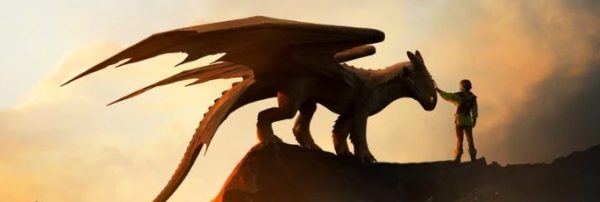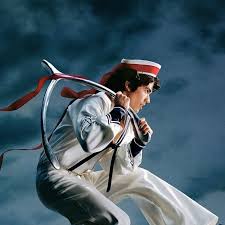Highly-anticipated conclusion to “Arc of a Scythe” series satisfies eagerly waiting readers
WARNING: Spoilers for “Scythe” and “Thunderhead” ahead
After Neal Shusterman released the compelling Young Adult dystopian novel “Scythe” in 2016, and the even better sequel “Thunderhead” in 2018, it makes sense that the newest edition to this series is one of the most anticipated novels of 2019 for fans of the author. “The Toll,” released Nov. 5, is 625 pages long, almost twice the size of both the previous books. But every single page is worth the time.
In “Scythe,” Neal Shusterman introduces this futuristic, post-mortal world where human beings have conquered death. If someone dies, they are rendered deadish and can be revived. With everyone immortal, population control is needed, so the scythedom was created. A scythe’s job is to glean people, killing them permanently. They are revered by some, hated by others, but feared by everybody. Citra and Rowan, the main characters, are invited to apprentice under Scythe Faraday, but only one of them will be chosen to become part of the scythedom. Fast forward to the end, where Citra is selected to become Scythe Anastasia, and Rowan has to escape the scythedom. He becomes Scythe Lucifer, not actually a real scythe ordained by the scythedom, and kills scythes who abuse their power. He is a criminal. One example of a scythe he killed is Scythe Goddard, a new-order, dictator-like scythe who goes on mass gleanings and is convinced that non-scythes are lower than scythes.
In “Thunderhead,” Shusterman describes Citra’s life as a scythe and Rowan’s life as a vigilante. He introduces the Thunderhead, an AI programmed to help humanity, Greyson Tolliver, who has depended on the Thunderhead his whole life, and the Tonists, a religious extremist group that hates everything about the postmortal world. This one is a little low on the action but still interesting. The biggest, most important plot point was Scythe Goddard’s return from the dead and his attempts to become the ruler of the scythedom and control the world.
At the end of “Thunderhead,” the great island of Endura, where all the scythes convene to make decisions, had sunk, killing many great scythes. One among the dead was our beloved Scythe Curie, who made a last-minute attempt to save Citra (also known as Scythe Anastasia) and Rowan (also known as Scythe Lucifer) by locking them in a vault to preserve their bodies to later be revived. After this tragic event, The Thunderhead, the AI programmed to help humankind, went silent to all of humanity, marking them as unsavory. It wailed and mourned for humanity, an action known as the Great Resonance to the Tonists, the religious extremist group that hates scythes and the practice of gleaning. Every human was cut off from the Thunderhead except Greyson Tolliver.
Following the crazy conclusion of the previous book, “The Toll” takes place a few years after this, and humanity is changed. There is a mission to salvage the sunken island of Endura, led by captain Jerico Soberanis, who becomes an important character later. Evidently, they will find all the lost scythe diamonds, but more importantly, the deadish bodies of Citra and Rowan. With many scythes perished after the sinking of Endura, it seems as though nothing stands in between the cruel and corrupt Scythe Goddard and his complete control over the worldwide scythedom. If it were up to him, the gleaning quota would be eliminated, and scythes could glean as much or as little as they wanted. He is well-known for his mass gleanings, taking out hundreds of people at a time. Now, it is up to the remaining scythes who haven’t been corrupted by Goddard’s ideals to stop him, as well as Citra and Rowan after they have been revived.
At the same time, humanity is very different without the input of The Thunderhead. It is still helping indirectly, but it can’t speak to anyone, deeply affecting many who depended on it. Greyson, the only one who can still communicate with The Thunderhead, has lived his life among the Tonists. Because his position is so unique, he is transformed into a prophet called “The Toll” by one of his trusted advisors, a religious symbol where people can seek guidance from The Thunderhead through Greyson. Finally, Scythe Faraday, an honorable scythe who served as a mentor to both Citra and Rowan, with the help of Munira, someone who works at the library, discovers the Land of Nod, a fail-safe island created by the founding scythes that was in The Thunderhead’s blindspot. With Tonists on the rise and more and more scythes deflecting to Goddard’s side, it will take a lot to save humanity.
It would be a bit of a stretch to say that the story captivated me immediately because it was a little slow to start off. However, as soon as the story picked up, I found myself breezing through the book without even trying. Though the book and the story might have been dragged out a little longer than necessary, I was still swept up in the story. It was a carefully developed, well thought-out plot, with just the right amount of conflict and calm and a completely shocking and unique ending. Once again, Shusterman has blown me away with an interesting and exceptional storyline.
It was nice to see most of the same characters again, though they spent more time apart than together. The well-developed relationship between Citra and Rowan was treasured in the previous books, and it was somewhat disappointing to not have as much of that in this book until the very end. Even so, I understand Shusterman’s reason for their separation as it was relevant to the plot, and it contributed greatly to the build-up of the suspense leading to the end. The addition of new characters was effective as well. Jerico Soberanis, the captain of the salvage operation that found Citra and Rowan, rose in importance, becoming the protector of Scythe Anastasia and eventually connecting with Greyson after they all came together at the end. He/she ends up helping the group a lot. Additionally, high-ranked scythes, like Scythe Possuelo from Amazonia and Scythe Tenkamenin from SubSahara, provide more mentor figures for Citra to look up to. All of the characters seemed necessary and placed purposely, not haphazardly.
Finally, it’s time to discuss the ending. Shusterman does a great job with shocking, twisted endings, as proved by the ending of “Thunderhead.” And this one was no different. It was almost a perfect ending, shocking but feasible. Satisfying yet unsatisfying at the same time. It left a lot up in the air, but it still seemed like a good resolution. Though it deeply saddens me that one of the best series I’ve ever read is over, I’m glad Shusterman decided to end it the way he did.





